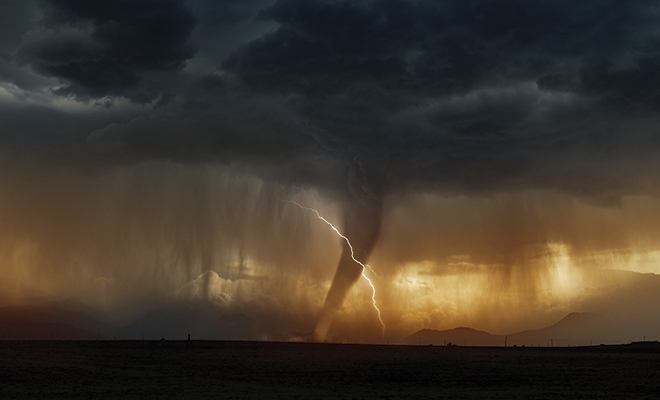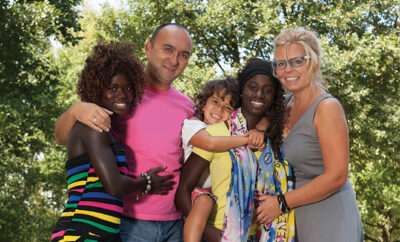
Prepare your child for an emergency
As a television news reporter, my assignment one day took me into a neighborhood that had been devastated by a tornado. I was instructed to talk to people as they were rebuilding.
It was the second anniversary of the tragedy. The natural disaster had torn a path of destruction in its wake, completely leveling houses and destroying everything in its path. As I walked house to house, talking to homeowners about their struggles, I met a woman and her little girl. This tiny peanut must have been about five years old, her head of blonde hair mussed by the blanket she was rubbing against it. Ten years later, I still have vivid memories of the haunted look on her face, one pacifier dangling from her lips and another four or five clutched tightly between her fingers. I spoke to her mother, whose leg she was hiding behind and who told me the child still had nightmares about the traumatic event, even two years later.
Children react to stress in different ways. Just like the little girl whose house had been knocked down by the tornado, they look to their parents and caregivers to comfort them and help them feel safe. Thankfully, only a small percentage of us will experience tragedy on the level of a tornado, but we need to be prepared for any emergency that could present itself, from a medical emergency such as a bee sting to a missing child to a fire.
The most important step you can take in preparing your children for an emergency is to talk to them about it. Teach them about natural hazards such as fires, blizzards, ice storms, severe thunderstorms, tornadoes and hurricanes, and what to do if they occur. Make a family emergency plan and prepare a family emergency kit. Teach them what to do in case of fire and make an escape plan together. Discuss the possibility of an emergency at school and enlighten them on what to expect.
In addition to open communication, arm yourself and your family with ICE cards, or In Case of Emergency cards. They should include a picture of your child, medical information, allergies, medication and contact information for members of your family. They should also contain contact information for out-of-town family members in case of a large-scale disaster. Save the Children offers programs for a variety of emergencies, including a template to create your own personalized ICE card. It’s free and accessible at savethechildren.org.
You should also arm your children with information. Teach them at least one parent’s cell phone number or other contact number and help them memorize their address. If your child is allergic to any food, make sure the child knows to speak up about it.
Teach your children how to use 9-1-1. Explain to them exactly what it means, how to assess the risks and determine when it is appropriate to call, and what information to give when they call. Practice 9-1-1 calls with your children so they aren’t overwhelmed if they need to dial it one day. Consider placing a simple instructional sheet next to the phone highlighting simple emergency instructions. When you’re using a cell phone to place the 9-1-1 call, be sure to tell the emergency dispatcher your exact location as quickly as possible, in case you get disconnected. It often takes longer to find your location via cell phone than a land line. When children are in the home, it’s always a good idea to keep a land line connected. If a babysitter uses her phone, the call might be traced back to the babysitter instead of the child’s home. Avoiding such delays can be crucial and even lifesaving.
Create an emergency kit and include a flashlight, rain poncho, food, water, light sticks, a breathing mask, a first aid kit, diapers and wipes, an extra set of clothing, a stash of about $150 in cash and other supplies. Keep a “refresh card” taped to the top of the kit to remind you when food is expiring, when you expect to outgrow clothes and diapers and if anything needs to be replenished. Find a safe place to keep the kit and remember where you are storing it!
Learn basic CPR. In an emergency such as choking, every second is precious and potentially lifesaving.
In case of disaster to the home, choose a location outside the home where you will meet. A fire, earthquake or other natural disaster can separate families and make it difficult to find each other again.
Choose a trusted family member or friend who can pick up your children at school. Let the child and school know who that person is. Give official permission to the school.
Most importantly, stay calm. A panicked parent will not be able to deal with an emergency or communicate to emergency personnel as effectively. And if you are stressed, this could cause anxiety in your children, a state every parent tries to avoid, emergency or not. HLM
Sources: parents.com, savethechildren.org, getprepared.gc.ca, redwavesecurity.com and breezymama.com.







